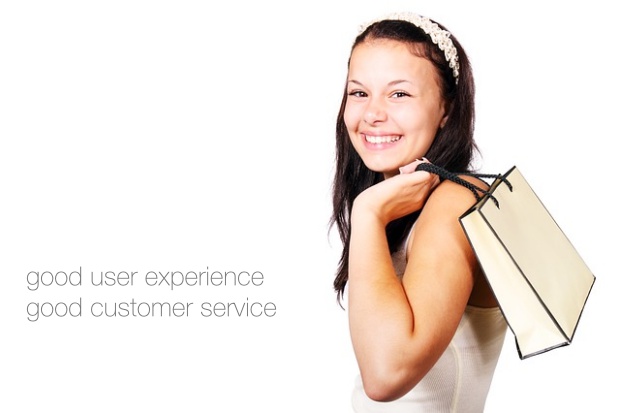Whether you are selling furniture, fixing computers, or are providing marketing advice for businesses and non-profit organizations (like we are!), having excellent customer service should always be your first priority. Decade after decade we see studies indicating more than 70% of consumers say the service and attitudes of the staff play an important role in deciding which business or organization they choose to support. And by support, we mean buy from, donate to and/or talk to friends about.
When people walk into your business (or onto your website) and are met with poor, substandard customer service they can, and usually will, be less likely to become a member of your tribe. We all know tribe members are crucial to our businesses! Check out this great post about building your email list from our trusted friend, Ramsay Taplin of Blog Tyrant.
About Your Audience
Defining your target audience is a vital part of any effective website, social media campaign or other marketing activity. It’s a big job that requires research, development and testing. So, without getting in-depth about your audience in this post, let’s just take a surface level look at these two age-based demographics and consider how we view them in relation to our face-to-face and online operations:
The Youngsters
A recent study from a marketing firm reported the age group of 18-24-year-olds, or Generation Y, rely more heavily on their impression of a business’ staff to make their spending choice than other age groups do. This demonstrates that younger consumers are basing their decisions on the relational experience they had with you or your staff member.
Face-to-face relationships matter.
The Youngsters Plus the Rest of Us
We know the same group of 18-24-year-olds also relies heavily on the Internet to make their buying decisions and, in parallel, a larger age group – the 24-84+ year olds – has a ton of Internet moxie, too! So, put no less stock in the quality of your website and social media presence than you do in the staff member behind your counter or answering your phone.
Online relationships matter.
Keep It or Kick It: Tips for Improving Your Website’s Customer Service
Here is a review of some basic tips for making sure your website is a good vehicle for excellent customer service:
Platform
Your website is built on somebody else’s platform (Wix, Weebly, Blogger, WordPress.com, Tumbler, etc.). It’s not yours, you don’t own or control it. Kick it.
Your website is built on your own platform with your own website hosting (WordPress.org’s software hosted by a commercial service like Dreamhost or Bluehost is our top recommendation for building your own platform). Keep it.
Navigation
Your website’s navigation addresses each and every place a person could possibly want to go on your website; those 8-deep drop down menus really look cool. Kick it.
Your website’s navigation is simple, clear and based on your marketing plan; what you want people to do and how do you want them to get there. Keep it.
Contact Information
Your business contact information can be found in the middle of the second paragraph of your About Us page. And it’s an email address that is either not auto-linked to trigger an email client, or it’s obfuscated to protect it from email harvester bots. Kick it.
Your business contact information is located at the top or bottom of every page or is at least easily found in the most obvious location – the Contact Us page. Oh, and your Contact Us page needs to be found where people expect to see it in the website’s main navigation. Keep it.
[message_box title=”PRO TIP” color=”yellow”]
Want to auto-trigger an email client when your visitor clicks on your email address? Here is an example of the HTML for that:
<a href=“mailto:name@nameofcompany.com”>name@nameofcompany.com</a>
This works if your visitor has their browser settings configured to open their favored email client (gmail, yahoo, outlook, etc.), when they click on an email address link.
[/message_box]
Home Page Content
Your website’s Home page is crammed with “informative” text. Kick it.
Your website’s Home page uses the right amount of clearly written text to convey your marketing message/solve their problem and funnel people a click deeper, as needed. Keep it.
Imagery; photographs and graphics
Your website’s imagery is comprised of some of the prettiest pictures of trees on a hill or ocean waves crashing against the rocks or birds taking flight over pristine landscape. Oh, look, there are neat nature pictures in the header of each and every page — how special! People could enjoy looking at these nice pictures for hours [sarcasm]. Kick it.
Your website’s imagery is focused on conveying a visual representation of your marketing message, of how you solve a problem for people. It can have a brief text overlay or it might be powerful enough without words. It tries to show people — not the stock image fake people — but realistic people related to your service or product. The imagery can be planned and professionally shot, but it’s still real life stuff. The imagery, above all, is used to tell a cohesive story. Keep it.
Social Media
Your website’s social media integration consists of an oddly placed Facebook icon that is not clickable, or a MySpace icon that is. Kick it.
Your website’s social media integration includes clickable icons to your well-maintained social channels (i.e. Facebook, Twitter, LinkedIn, Google+, etc.). You might even have a Twitter feed or Facebook like box to help show signs of life on your website. You use your social media to as proof of your business’ legitimacy and a way to drive people to your website. Keep it.
About Us Page Content
Your website’s About Us page, the second most-visited page on most websites, has a picture of you taking selfie in the bathroom mirror and your bio tells your life story, starting in high school. Kick it.
Your website’s About Us page’s content is professional, easy to read and pertinent to what people want to know about you; not what you think is important for them to know. The content makes an emotional connection with people and addresses the topic of how & why you can help them solve their problem. The picture of you (and your staff, as applicable) is well-thought and welcoming; somebody made you genuinely smile when the picture was snapped. Keep it.
Excellent customer service, with your website as the delivery vehicle, is not a one-time plug-and-play solution. Continual review, improvement and refinement of your website’s appearance and functionality is what is required. And you can do it!
As I am sure you can see, the list of kick it or keep it items could be much more expansive. But start with these, see where you stand, refine them in your own situation and then get ready for the next batch we publish here!



